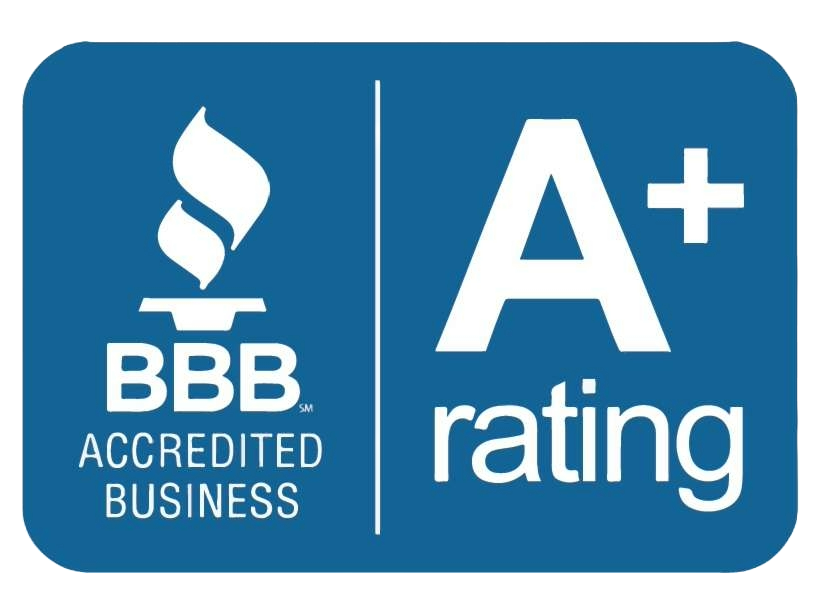
Homeowners insurance. You know you should probably have it, and if you have a mortgage, you’re required to have it. But how much do you know about it beyond that – what it covers (and does not cover), the types of policies, how much coverage you need? What happens in case of minor damage from a storm, or even something as rare as fire damage? If you’re not familiar with these things, you may very well be overpaying and/or be underinsured. To help you out, we’ve put together this homeowners insurance guide for homebuyers in Baltimore, MD.
Homeowners Insurance Overview
Homeowner’s insurance is a safety net. It will “compensate you if an event covered under your policy damages or destroys your home or personal items. It will also cover you in certain instances if you injure someone else or cause property damage.”
The three main functions of this insurance are to…
- “Repair your house, yard and other structures.
- Repair or replace your personal belongings.
- Cover personal liability if you’re held legally responsible for damage or injury to someone else.”
There are three basic levels of coverage with homeowner’s insurance – actual cash value, replacement cost, and extended replacement cost/value. In addition, “[p]olicy rates are largely determined by the insurer’s risk that you’ll file a claim.” This risk is assessed on the basis of “past claim history associated with the home, the neighborhood, and the home’s condition.”
Types of Policies
There are several types of homeowner’s insurance (also called “policy forms”), with some providing more coverage than others. The most common policy types are . . .
HO-1 AND HO-2
The least popular types of homeowners insurance—HO-1 and HO-2—offer the most limited protection and can leave homeowners exposed to significant out-of-pocket costs in the event of damage. These basic policies provide coverage only for specific perils that are explicitly listed in the policy, meaning if the cause of damage isn’t on that list, you won’t be covered. Together, these stripped-down options account for just about 8% of all homeowners insurance policies in the U.S.
HO-2, the more common of the two, typically covers your home and personal belongings against 16 named perils, which often include events like fire, theft, hail, and certain types of water damage. While it offers more coverage than HO-1, it still lacks the comprehensive protection of broader policy types like HO-3 or HO-5. HO-1, on the other hand, is rarely offered today and provides the most minimal coverage—it usually only protects against about 10 perils and often excludes things like personal property or liability coverage altogether.
While these policies might appeal to budget-conscious homeowners, it’s important to understand the trade-offs. Opting for a cheaper premium could mean far less financial protection when disaster strikes. For homeowners in high-risk areas or with older or damaged properties, exploring more robust insurance options may provide better peace of mind in the long run.
HO-3
HO-3 insurance policies—commonly referred to as “special form” coverage—are the standard choice for most homeowners, making up nearly 80% of all insurance policies on owner-occupied residences. If you’ve financed your home with a mortgage, your lender will almost certainly require you to maintain at least this level of coverage, as it offers a solid balance between protection and affordability.
What makes HO-3 policies so popular is their broad protection for the structure of your home. They operate on an “open perils” basis, meaning your home is insured against all types of sudden and accidental damage—unless the cause is explicitly excluded in the policy. Common exclusions include natural disasters like earthquakes or floods, which require separate policies or endorsements. When it comes to personal belongings, however, HO-3 policies take a more limited approach, covering only damage caused by 16 specifically named perils such as fire, theft, or vandalism.
If you want full protection for your personal items—especially high-value possessions—you may need to purchase additional endorsements or upgrade to an HO-5 policy, which extends open-perils coverage to both your home and belongings. Overall, HO-3 offers a reliable middle ground, giving homeowners a strong safety net against unexpected events while allowing for customization based on your needs and risk factors.
HO-5
Also known as comprehensive form or premier coverage, the HO-5 insurance policy offers the highest level of protection available for homeowners. It provides broad, all-risk coverage for both the structure of your home and your personal belongings—meaning it covers damage from any cause unless that cause is specifically excluded in the policy. Common exclusions typically include predictable or preventable events like neglect, mold, floods, earthquakes, or infestations, which would require separate coverage or endorsements.
Unlike other policy types, such as HO-3—which only provides named peril protection for personal belongings—HO-5 extends open-perils coverage to both the home and everything inside it. This means you’re protected even if the cause of damage isn’t explicitly listed, offering peace of mind against unexpected disasters.
However, this premier level of coverage is generally reserved for newer, well-maintained homes located in lower-risk areas. Insurers often have stricter eligibility requirements, and not all providers offer HO-5 policies due to the broader risk they assume. That said, for homeowners who qualify, HO-5 is often worth the slightly higher premium, as it significantly reduces the likelihood of claim denials and out-of-pocket expenses when the unexpected happens.
Replacement Cost, Actual Cash Value, and More
You also need to be aware that “[i]fyour home is destroyed, your homeowner’s insurance company isn’t likely to simply write you a check for the amount listed on your policy. Your payout could differ depending on the cost to rebuild and the coverage you chose – and much of it will be paid directly to contractors rebuilding your home, in many cases.”
Concerning this, here are some things you need to consider when deciding on coverage:
REPLACEMENT COST
This type of coverage, often referred to as extended or guaranteed replacement cost coverage, ensures that your insurer will cover the full cost to rebuild your home—even if that amount exceeds your policy’s original limits. It’s especially valuable in today’s volatile housing market, where construction costs can spike due to inflation, labor shortages, or supply chain disruptions. For example, if a major storm impacts your region and demand for materials and contractors surges, rebuilding your home could cost significantly more than it did when your policy was written. Without this type of coverage, you could be left paying the difference out of pocket. By including extended replacement cost protection, you’re shielding yourself from these unpredictable increases and ensuring that your home can be fully restored to its previous condition, regardless of market fluctuations.
ACTUAL CASH VALUE
“Actual cash value coverage pays the cost to repair or replace your damaged property, minus a deduction for depreciation. Most policies don’t use this method for the house itself, but it’s common for personal belongings.”
FUNCTIONAL REPLACEMENT COST VALUE
This type of coverage will pay to repair damage to your home, but possibly with cheaper materials than the original. For example, damage to plaster walls may be repaired with drywall, which is cheaper.
REPLACEMENTCOST VALUE
“Replacement cost value coverage pays to repair your home with materials of ‘like kind and quality,’ so plaster walls can be replaced with plaster. However, the payout won’t exceed your policy’s dwelling coverage limits.”
EXTENDED REPLACEMENT COST VALUE
This type of coverage “will pay out more than the face value of your dwelling coverage, up to a specified limit, if that’s what it takes to fix your home.” This limit is typically a percentage or a dollar amount, but in either case, it provides “a cushion if rebuilding is more expensive than you expected.”
Guaranteed Replacement Cost Value
“Guaranteed replacement cost value coverage pays the full cost to repair or replace your home after a covered loss, even if it exceeds your policy limits.” The catch, though, is that this level of coverage isn’t offered by all insurance companies.
Determining Amount of Coverage Needed
Now, you need to determine exactly how much coverage you need from your homeowner’s insurance. You’ll need enough coverage to rebuild/repair your home in the case that is destroyed or severely damaged. You can estimate the cost to rebuild by multiplying your home’s square footage by per-square-foot local construction costs. YourBaltimore, MD agent can also provide some guidance here. Just call(410) 989-5200 to find out more.
What you shouldn’t do is “focus on what you paid for the house, how much you owe on your mortgage, your property tax, or the price you could get if you sell. If you base your coverage on those numbers, you could end up with the wrong amount of insurance. Instead, set your dwelling coverage limit at the cost to rebuild. You can be confident you’ll have enough funds for repairs, and you won’t be paying for more coverage than you need.”
When it comes to your belongings, your personal property, “you’ll generally want coverage limits that are at least 50% of your dwelling coverage amount, and your insurer may automatically set the limit that way.” You can, however, lower the limit or purchase more coverage if you need to/
With respect to the liability limit, experts advise having a “limit at least high enough to cover your net worth,” including “savings, investment accounts, and other assets, minus auto loans, credit card balances, and other debts.”
Cost of Homeowners Insurance
So what does homeowner’s insurance cost? The national average is about $1,600 per year, but this is an average and individual prices can be much higher or lower. In addition, your credit score can also affect the cost of your insurance.
And then there’s the deductible – the amount you have to pay out of your pocket before the insurance kicks in. Here are the two main things to keep in mind when choosing your policy’s deductible:
- A higher deductible will reduce your premium, but you’ll pay a lot more when you file a claim.
- With a lower deductible, you’ll pay a higher premium, but will pay a lot less out of your pocket for a claim.
When It’s Time to Buy
Ultimately, homeowners insurance isn’t a luxury – it’s a necessity. But there are so many influencing factors and available options, it’s difficult to know what kind of policy and coverage is right for you. An experienced Baltimore, MD agent can provide valuable assistance in many of these areas. We suggest that Baltimore, MD home buyers trying to untangle the homeowner’s insurance puzzle, contact us today at (410) 989-5200.


